Discover our exclusive collection
Over 3,000 historic giclee prints, 16 artists and 40 complete sets
Any questions?
We are more than happy to help. Just send us a message, and we will be in touch
Hermann Schlegel (1804-1884) was born in Germany. His love of natural history began at an early age.
His father, a brassfounder, was a keen collector of butterflies which first gave the young Schlegel an introduction to the natural world. But it was the unexpected discovery of a buzzard’s nest which set Schlegel on his path to studying birds.
Schlegel started working for his father but soon grew tired of this type of work. At the age of twenty he traveled to Vienna , where he attended university lectures by Austrian zoologist Leopold Fitzinger and Austrian taxidermist and zoologist Johann Jakob Heckel.
A letter of introduction from the ornithologist Brehm secured him a place in the ‘Naturhistorisches Museum Wien’. A year later, the director of the museum recommended Schlegel to the ‘Natural History Museum’ in Leiden in the Netherlands.
In Leiden, Schlegel initially started as an assistant, and soon he was involved in the entire zoological collection.
Schelgel worked for 33 years under the inspiring leadership of the director of the museum. And after Temminck’s death, Schlegel succeeded him as director of the Natural History Museum.
In his early 40s, Schlegel became a correspondent of the Royal Institute of the Netherlands which later became the Royal Netherlands Academy of Arts and Sciences.
Schlegel himself was an excellent draftsman and applied his drawing to stone (lithography).
In 1849 he laid down rules in writing that a “physical drawing” must comply with. The rules include the distance to the object and the organism must appear as if it is alive and intact, the colors must be real, the lighting must be right and the features that are likely to be individual must be omitted, because the illustration must be represent the species.
This period was a time of much debate on the topic of evolution. Schlegel believed that species were fixed and made his opposition to Darwin’s theory of evolution clear.
Schlegel employed three accomplished artists: John Gerrard Keulemans, Joseph Smit, and Joseph Wolf who worked with him on his volumes of bird art.
Schlegel died on 17 January 1884 in Leiden but his name lives on. Several species have been named after him including the crested penguin Eudyptes Schlegeli and the venomous snake Aspidomorphus Schlegelii.
Two of Schlegel’s best-loved publications are his work on falconry: Traité de Fauconnerie and De Toerako’s, his study of the Turaco – a colorful bird from sub-Saharan Africa.
Taken from the original illustrations in the libraries of Teylers Museum in the Netherlands, the collection ‘Traité de Fauconnerie‘ containes 24 giclee prints; and the collection ‘De Toerako’s‘ [The Turacos] contains 17 prints after the hand-colored originals.
Over 3,000 historic giclee prints, 16 artists and 40 complete sets
We are more than happy to help. Just send us a message, and we will be in touch
Chambre of Commerce: 75 23 82 84
VAT: NL860202604B01
To subscribe to our newsletter and be updated about new and interesting additions to our collection, please enter your email address below.

© Heritage Prints 1992-2022 | All rights reserved